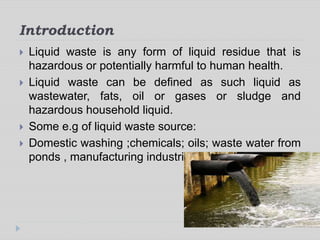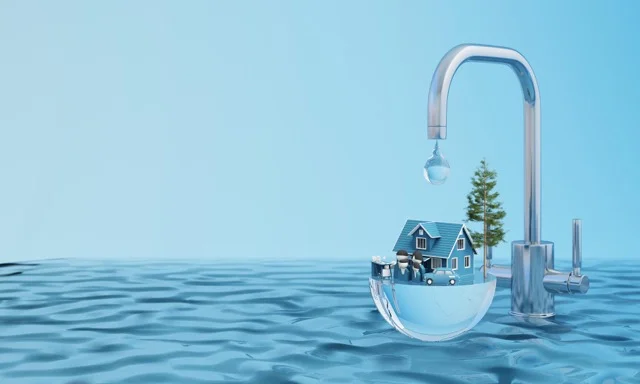Top Guidelines Of Reclaim Waste
Top Guidelines Of Reclaim Waste
Blog Article
Reclaim Waste Things To Know Before You Buy
Table of ContentsReclaim Waste for BeginnersThe 8-Minute Rule for Reclaim WasteExcitement About Reclaim WasteThe Single Strategy To Use For Reclaim WasteReclaim Waste for Beginners
Residential sewage waste refers to the waste and items from a property septic storage tank. The appropriate administration and disposal of domestic sewage waste require liquid waste to be transferred to a sewage therapy plant where the proper techniques and tools are applied to purify and dispose of waste.
Business waste usually includes possible hazards, such as flammable materials or a mix of liquid and solid waste items, and calls for an extra advanced and thorough disposal procedure. The disposal of business waste usually entails the purification of waste prior to transport to make sure risk-free and proper disposal. Hazardous waste is created from byproducts and overflow of industrial processes and manufacturing.
This kind of waste can not make use of the very same sewer administration transport or procedures as septic or industrial liquids. The hazardous waste management process calls for the inspection and screening of liquid waste prior to it goes through the disposal process (liquid waste removal). Runoff waste is the liquid waste that originates from overflow and excess stormwater in extremely populated locations or cities
Overflow waste can cause contamination and flooding otherwise managed effectively. Learn much more regarding sewer cleaning and waste management. Making certain appropriate waste administration can avoid calamities and reduce environmental harm. Both individuals in household settings and professionals in business or manufacturing industries can gain from recognizing the processes and policies of liquid waste management.
The 7-Second Trick For Reclaim Waste
Get in touch with PROS Solutions today to discover about our waste monitoring and disposal services and the appropriate means to look after the liquid waste you generate.
(https://pxhere.com/en/photographer-me/4429814)Do you understand what happens to your water when you pull the plug, flush the toilet or drain pipes the washing machine? No? Well, it's worth recognizing. This so-called 'wastewater' is not only an important source but, after therapy, will be released to our land, rivers or the sea. Made use of water from bathrooms, showers, bathrooms, cooking area sinks, laundries and commercial processes is called wastewater.

water utilized to cool machinery or clean plant and equipment). Stormwater, a type of wastewater, is runoff that streams from agricultural and city locations such as roofs, parks, gardens, roadways, courses and rain gutters right into stormwater drains, after rain. Stormwater flows untreated straight to neighborhood creeks or rivers, ultimately getting to the sea.
The Best Guide To Reclaim Waste
In Queensland, a lot of wastewater is dealt with at sewer treatment plants. Wastewater is carried from residential or industrial websites through a system of drains and pump terminals, understood as sewerage reticulation, to a sewage therapy plant.
The Department of Natural Resources recommends city governments regarding handling, operating and preserving sewage systems and treatment plants. In unsewered locations, city governments may call for homeowners to set up specific or house sewer treatment systems to deal with residential wastewater from commodes, kitchens, shower rooms and washings. The Department of Natural Resources authorizes making use of household systems when they are verified to be reliable.
A lot of stormwater receives no therapy. In some new neighborhoods, treatment of some stormwater to remove litter, sand and crushed rock has started making use of gross contaminant traps. Wastewater treatment takes place in four phases: Eliminates strong issue. Bigger solids, such as plastics and other objects mistakenly discharged to drains, are removed when wastewater is passed through screens.
Wastewater then streams into huge tanks where solids clear up and are gotten rid of as sludge. Oil and scum are skimmed from the surface. Uses tiny living organisms understands as micro-organisms to break down and eliminate staying liquified wastes and fine particles. Micro-organisms and wastes are incorporated in the sludge. Removes nitrogen and phosphorus nutrients that could cause algal blooms in our rivers and intimidate water life.
Not known Facts About Reclaim Waste
Nutrient elimination is not readily available at all sewage treatment plants because it needs expensive specialized tools. Clear fluid effluent generated after treatment might still consist of disease-causing micro-organisms - liquid waste removal.

This typically suggests wastewater needs to be dealt with or impurities removed before it can be discharged to waterways. Most wastewater streams right into the sewerage system. my blog Under the Act, city governments administer authorizations and licences for environmentally pertinent tasks (Ages) entailing wastewater releases that may have a neighborhood effect. The division administers authorizations and permits to Periods entailing wastewater launches that could have a local or statewide influence.
The Definitive Guide to Reclaim Waste
Monitoring offers accurate information regarding water top quality and can confirm that licence problems are being fulfilled. The details acquired through surveillance gives the basis for making water top quality decisions.
Report this page